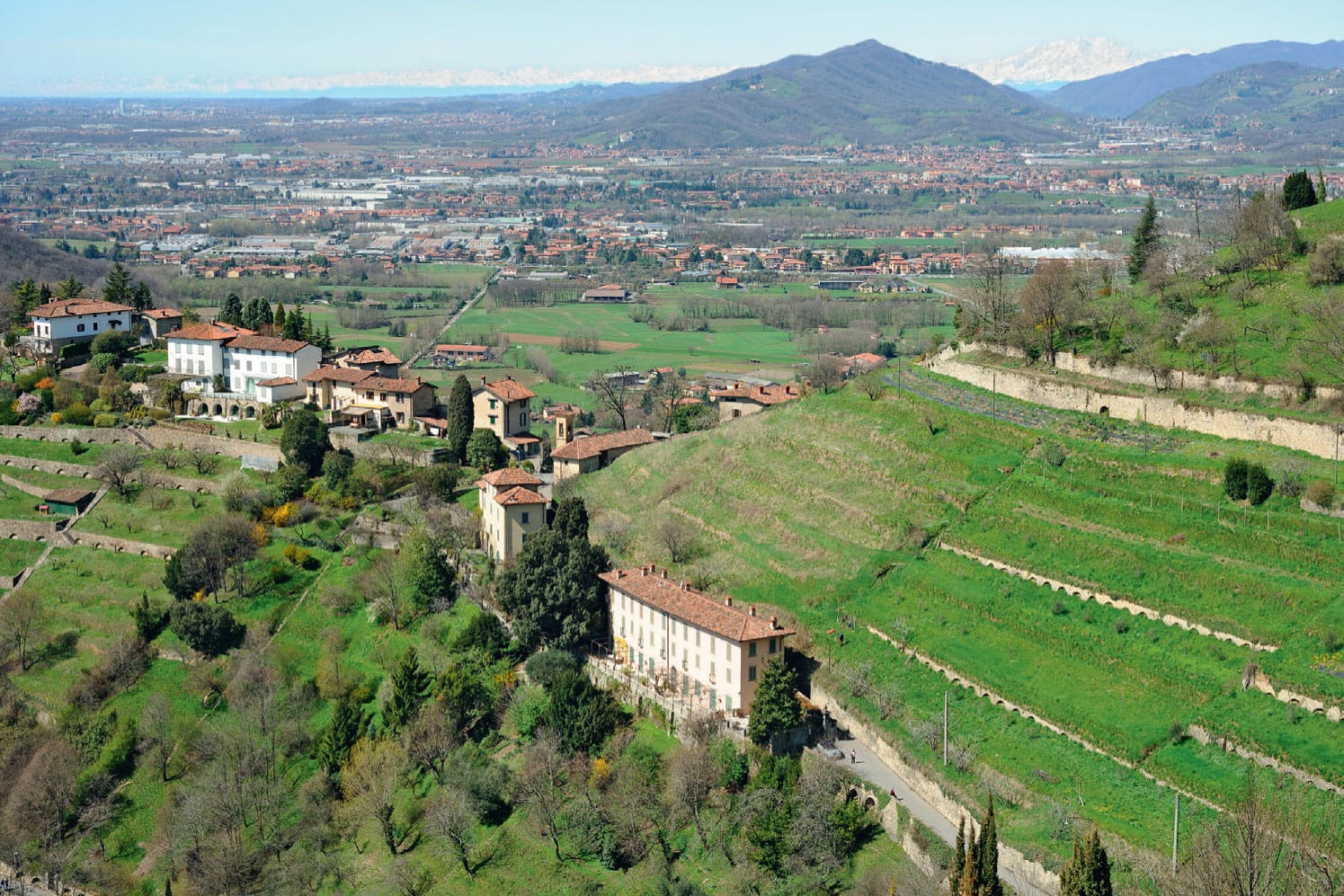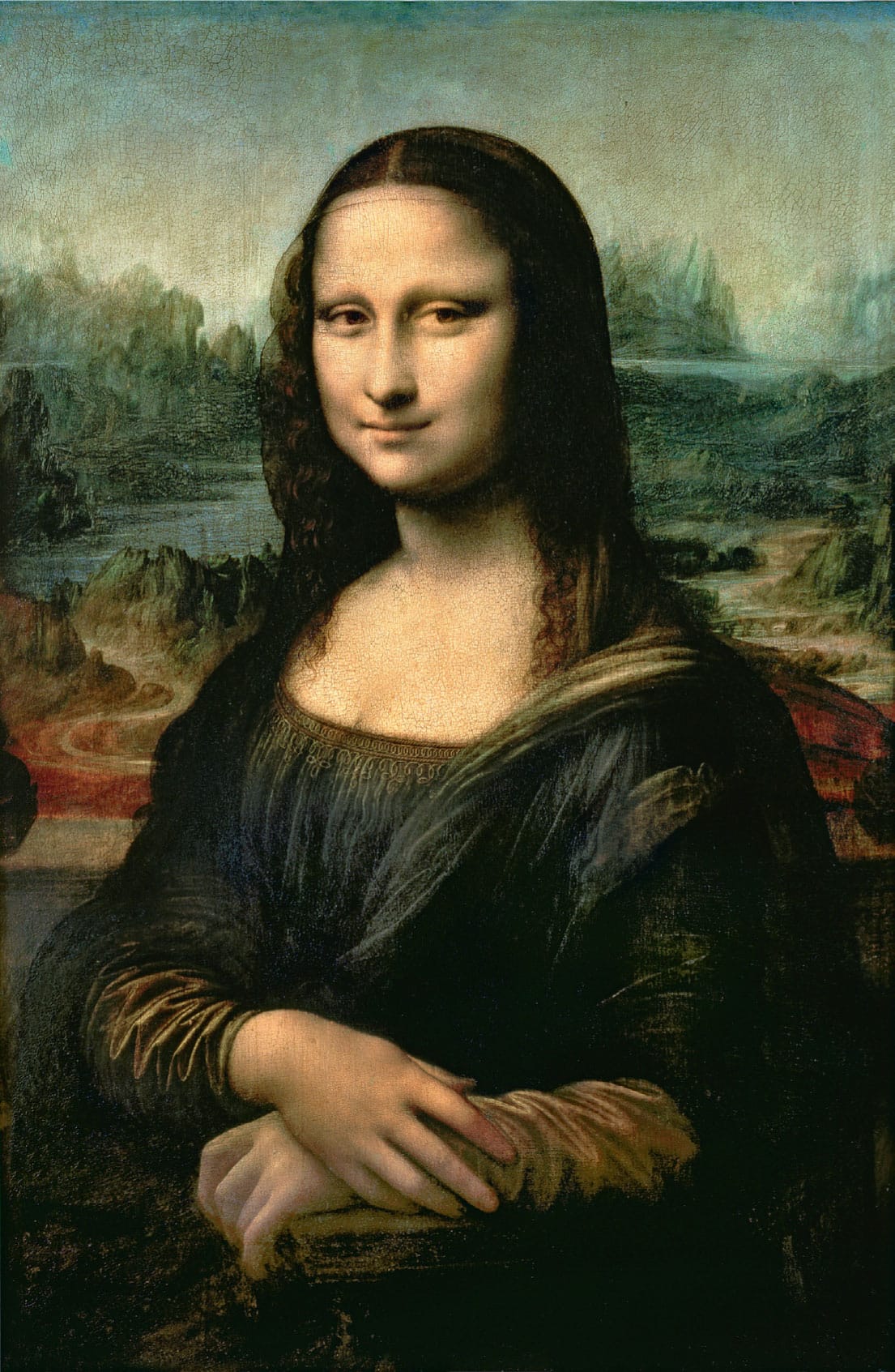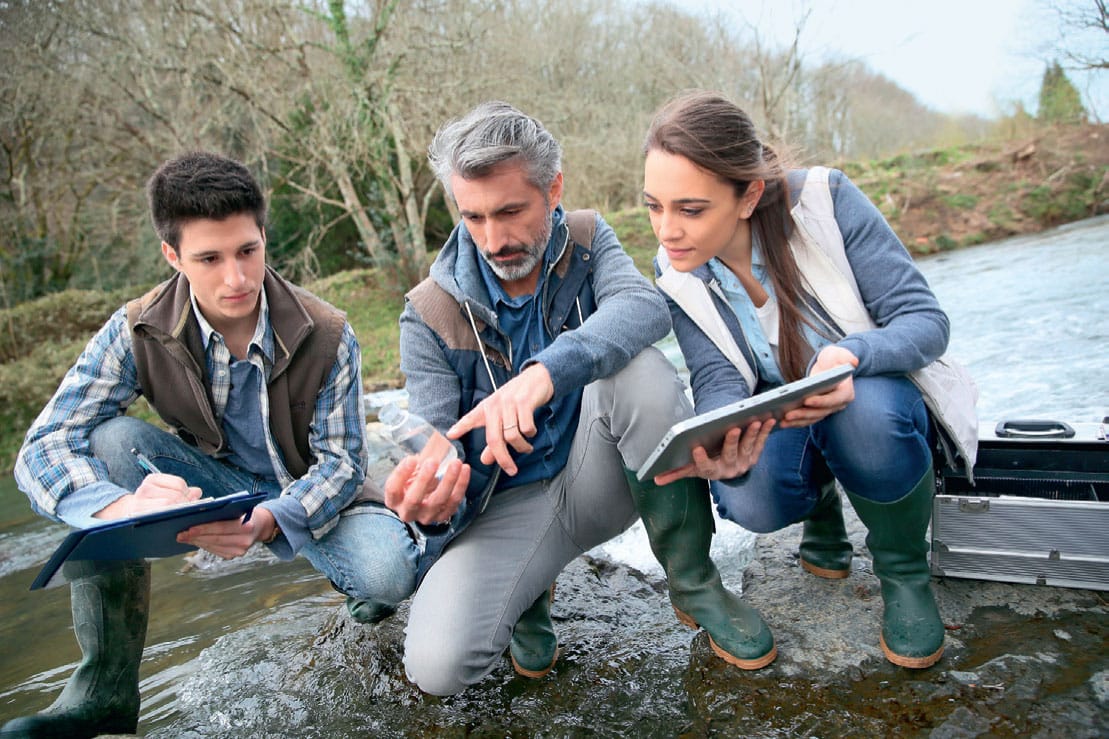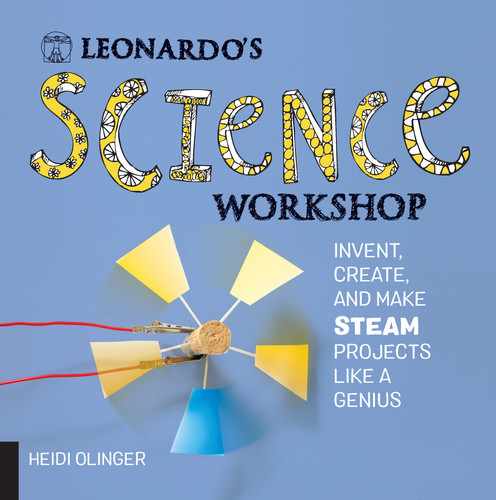INTRODUCTION
LEONARDO’S GENIUS
Some 7,200 pages of Leonardo da Vinci’s notebooks are with us today. Imagine, 500 years after his death, we still have his writings—but not all of them. Leonardo’s biographers believe that in his lifetime he may have filled between 20,000 and 28,000 pages with writings and detailed drawings about anatomy, botany, philosophy, physiology, engineering, architecture, zoology, painting, geometry, geography, and more. Somewhere they went missing. We’ve lost so many of his ideas and studies, questions and answers, but from the 7,200 pages we have, we’re able to see how Leonardo worked, and that is where we are lucky.
Leonardo (1452–1519) is recognized as one of the great geniuses of the Renaissance period in Europe, which stretched from the 1300s to the 1600s. But he’s also recognized as one of the greatest geniuses of all time. His notebooks explain why. Leonardo’s works of art—which include the most famous painting in the world, the Mona Lisa—are only part of his gift to us. His paintings inspire, but the information he left behind on how he created is an even greater gift. Leonardo’s genius was his thinking process, and that is something we can learn from and apply to our own learning.

The Italian countryside outside of Milan in northern Italy. Leonardo began keeping his now-famous notebooks around the time he moved to Milan in 1482. He was 30 years old, a lifelong student of nature, and he made lists of everything he learned about and wanted to know.
What’s important is that Leonardo did not think of art as separate from science or science as separate from engineering. His investigations as scientist and engineer strengthened his art because he understood anatomy, physics, nature, and geometry. His sketches of machines and technological inventions are beautiful—with as much attention paid to light, shadow, and fine detail as any preparatory sketches for his paintings.
One topic of study for Leonardo informed the next, and in his notebooks they are all crammed together—drawings of human anatomy are on the same page as sketches for watermills and notes about engineering projects. Paper was expensive in Leonardo’s day, and he did not waste it—he filled those pages. He kept a notebook in his belt so that he could pull it out and make notes whenever an idea occurred to him. That’s important.

Leonardo worked on his most famous painting, La Gioconda, known as Mona Lisa, from about 1503 to 1506. In most of his portraits and other paintings, Leonardo included details of scientifically accurate bodies of water, rocks, trees, and clouds.
Much has been said about Leonardo’s famous “mirror writing.” He was left handed and found it easiest to write from right to left—so most people must hold a page up to a mirror to read it. That tells us something interesting about how he did things “his way.” But it’s his boundless curiosity, his pleasure in figuring out how things work, his pursuit of ideas and unravelling the mysteries of nature and science for his own pleasure that make him a genius. He never stopped asking questions such as, “Why is the sky blue?” He never stopped looking for answers—and writing down his thoughts in his notebooks as he went along.

At the bottom of this page from one of Leonardo’s notebooks, you can see an example of his mirror writing, describing take off and landing gear for a flying machine. Try mirror writing some time.
And there is something else. Leonardo was never afraid to point out in his notes where he had been mistaken. That’s important, too. Study, learn, make mistakes, recognize the mistakes, grow from them, and keep learning!
In a school based on Leonardo’s style of learning, all subjects would come together in one space for us to experience how each influences the rest. We would learn science alongside math, math alongside music, music alongside technology, and so on. Today’s blend of STEAM—science, technology, engineering, art and design, and math—is very much the way that Leonardo learned about the world in which he lived.
The next time you work on a project, remember that how you work and what you do are as important as the final product. The steps you take and the heart and imagination you put into a project are what make the final thing a success.
LEONARDO WOULD HAVE LOVED THE SCIENTIFIC METHOD
THE SCIENTIFIC METHOD AS AN ONGOING PROCESS
Just because an experiment works the first time you try it, doesn’t mean it will work the next time. You have to test it many times. Scientists use a process called “the scientific method” to prove ideas. It’s a system of observation, experimentation, testing, measuring, and modification that helps us to be certain that the results of our experiments are correct.

The scientific method lets you plan, test, and examine the results of your experiments.
The concept of a scientific method didn’t exist when Leonardo was at work, but he was aware of the necessity to test ideas many times in different circumstances to make sure they really worked. “Before you make a general rule,” he wrote, “test it two or three times and observe whether the tests produce the same effects.”
Some projects in this book will ask you to apply the scientific method, just as scientists do in the world today. Here are the steps you will take:
STEP 1
You might observe something and ask why or how it happened. Form a question or statement that you will be able to test with an experiment. Your question or statement will be your hypothesis. Hypothesis means “to suppose,” and in the scientific method, a hypothesis is an idea that you intend to prove by study and investigation.
STEP 2
Decide if there are parts of your experiment that will change as you run your tests. Scientists call these variables. For instance, if you are conducting an experiment that has to do with water quality on a river, one of the variables will be the water itself—it keeps flowing.
Next, define the parts of the experiment that will not change. These are called controls. Controls remain constant. One of the control elements for the river experiment might be that you are testing at exactly the same time every day.
STEP 3
Find out if anyone else has already conducted the experiment you want to do. Even if they have, you have not yet done the experiment. Your experiment may produce different results that you’ll want to compare.

STEP 4
Think of an experiment that will test your hypothesis or idea. In your notebook, write down each step you will take to carry out the experiment.
STEP 5
Do the experiment according to the steps you’ve written out. Record your results. Scientists refer to results as data.
STEP 6
Figure out what the data tells you. In other words, what do the results of the experiment mean?
STEP 7
Make conclusions about the data and write an explanation about what happened when you tested your idea. Did you prove your hypothesis? Did the experiment disprove your idea? If you believe your observations to be correct, is there another hypothesis you might form and test? What further research might you do to prove your results?
For your experiments in this book and beyond, here is a chart to guide your use of the scientific method. Photocopy it or write the steps in your own notebook.
The questions you ask and the process you take to find the answers will lead you to experience, as Leonardo did, that no matter whether your pursuit is in science, technology, engineering, art and design, or math—everything is connected.
Keep a science notebook—you’ll be needing it as we proceed through these chapters. Choose any kind you like: spiral-bound, three-ring binder, pocket-size notepad—whatever works for you. We’ll apply the scientific method, beginning with air and flight.
Your Name |
Date of Experiment |
STEPS IN THE SCIENTIFIC METHOD |
YOUR NOTES |
Your Observation(s) |
|
Your Questions |
|
Hypothesis: Statement of What You Will Test |
|
Procedure: Steps for Carrying Out the Experiment |
|
Variables: What Will Change as You Run the Experiment? |
|
Controls: What Will Stay the Same? |
|
Record Your Data from the Experiment |
|
Conclusions: Explain What Happened |
|
